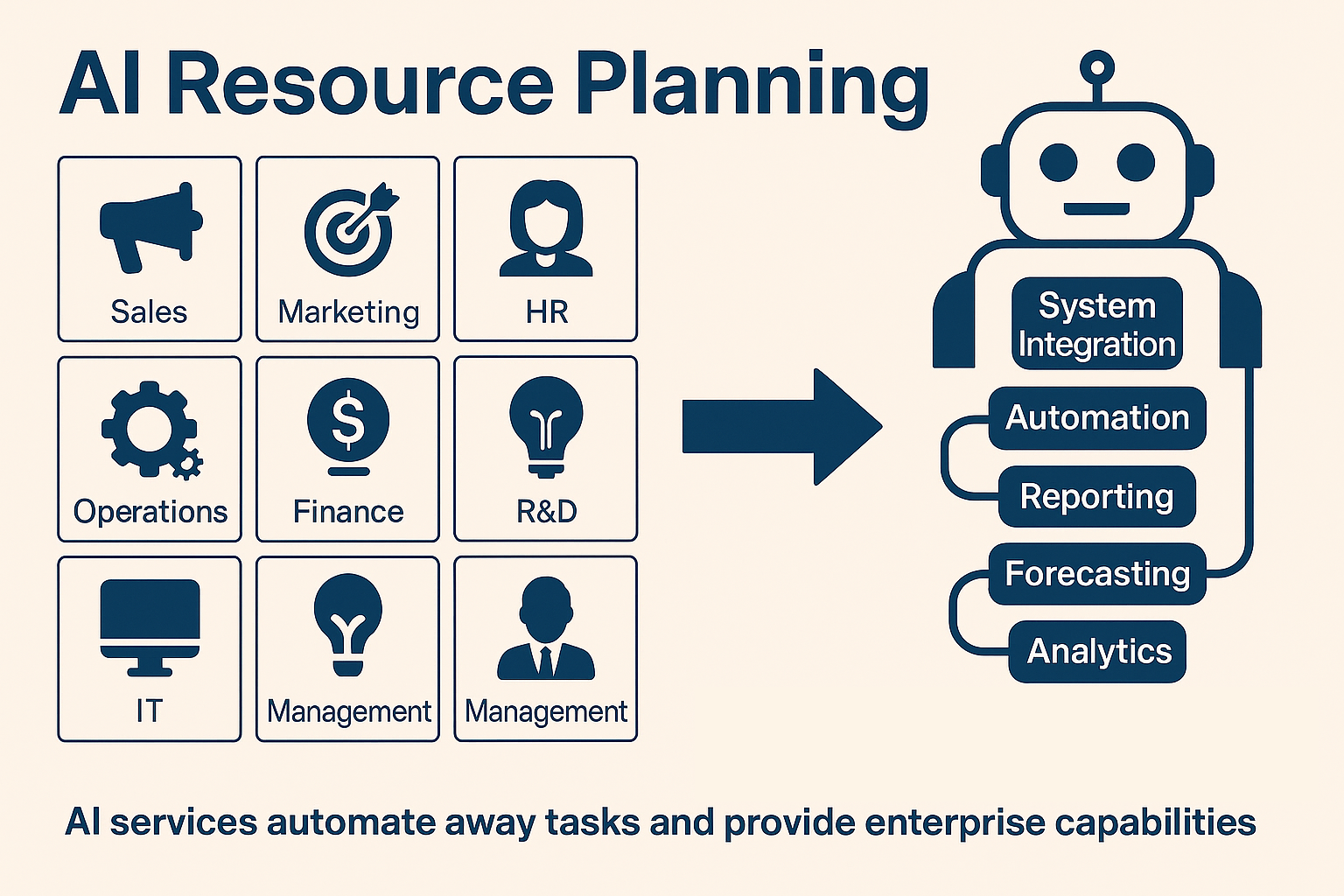
Historically, mature companies consist of these components: Sales, marketing, operations, HR, finance & accounting, R&D, IT, and management. As businesses grow, the division of these components becomes clearer. For a smaller business, the founding team members must wear multiple hats across different functions. When they get to a certain size, focusing on specific business functions makes teams more efficient.
This begs the question “What role does software play in this transition or progression?” The answer is multi-faceted. To most smaller businesses, makeshift spreadsheets, sef-serve SaaS tools, and good old entrepreneurial hustle can make things work just fine. Since their business divisions are less clear and developed, “horizontal” software tools with general purposes can benefit them.
For medium-sized businesses, vertical software solutions, third-party consultants, and sometimes home-grown software solutions can serve better. General-purpose software without a clear industry focus can miss critical features, functions, and use cases that must have.
Many of these so-called “Vertical SaaS” tool are cross-business function meaning that they may serve more than one departments at a company.
For larger corporations, they almost unexceptionally invest in having their IT departments, who are expected to manage and build software in-house.
If the software’s role changes from being a low-touch, self-serve, and inexpensive suite of tools to an omnipresent, jargon-throwing, dedicated team of IT professionals, what would this do to the users of the software? Most SMBs simply cannot afford highly customized, and ROI proven software solutions, therefore must experiment with solutions that may deliver value. Larger corps however are much more result-driven and have much less open-mindedness with niche tools. Even if they’d prefer to develop systems in-house, often they procure reputable products that can be tailored to their needs.
Now, the context’s clear. What do these companies need in common? In a perfect world, every business regardless of size, and composition wants ROI for business software. However, it’s still technically and economically unattainable to equip SMBs with
Automated Resource Planning
Unlike ERP, ARP starts with services that can automate away tasks. These services can be system integrations, automation, reporting, and services that serve each department within a business. While these services can be developed from the scratch for smaller companies, they can also be system integrations with already existing production software at larger corps. Hence, it’d give them control and visibility of important business functions.
As more production systems are connected, enterprise services such as reporting, analytics, forecasting, alert/notifications, system integration, coordination, document generation, calculations, etc. can now be automated without a lot of human input. AI is also accelerating this trend.
If you want to learn how ARP can help your business automate business processes, please reach out.
- Schedule a Discovery Call
- Email us directly: contact@adenhq.com